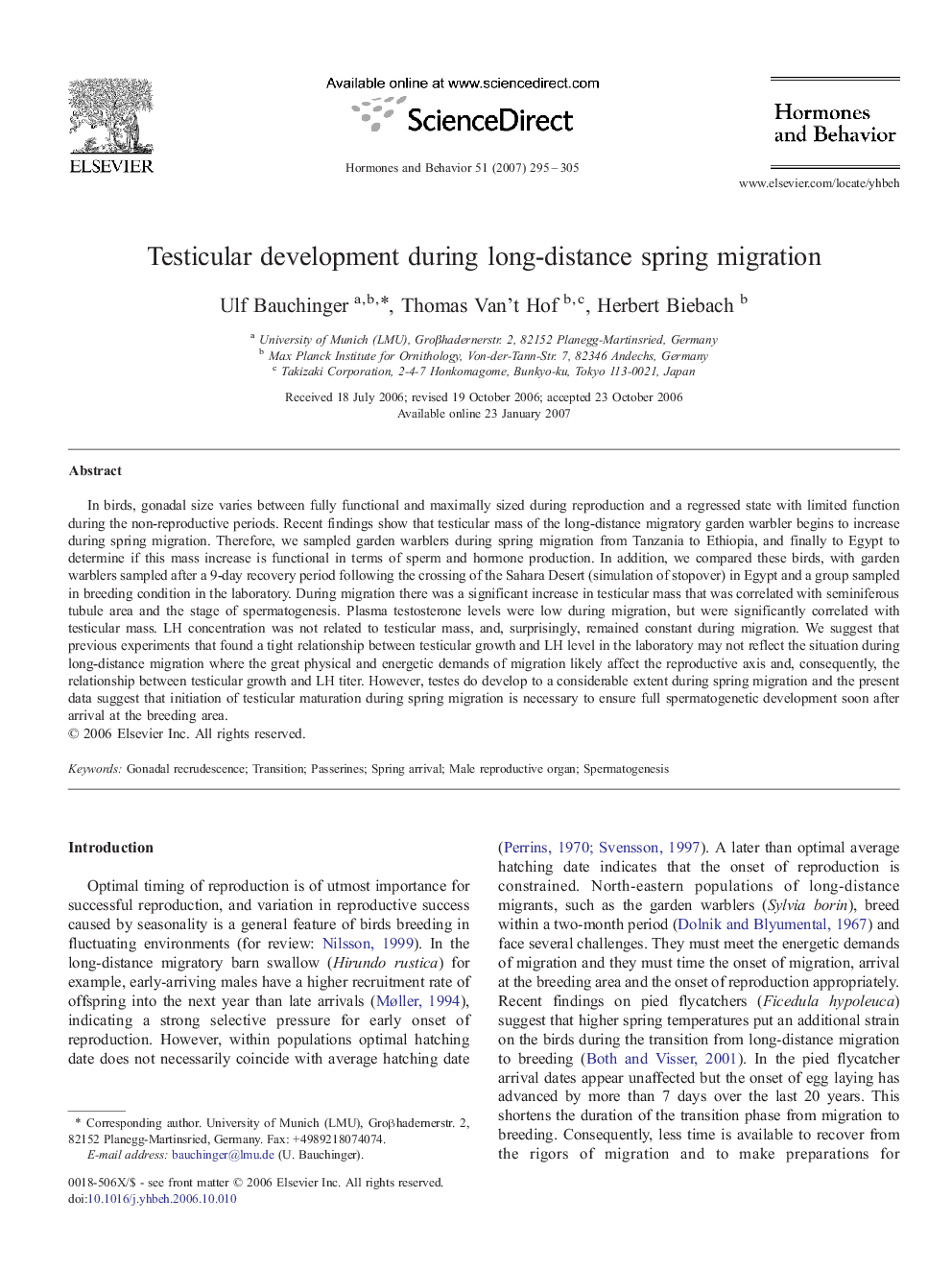| کد مقاله | کد نشریه | سال انتشار | مقاله انگلیسی | نسخه تمام متن |
|---|---|---|---|---|
| 323828 | 540801 | 2007 | 11 صفحه PDF | دانلود رایگان |

In birds, gonadal size varies between fully functional and maximally sized during reproduction and a regressed state with limited function during the non-reproductive periods. Recent findings show that testicular mass of the long-distance migratory garden warbler begins to increase during spring migration. Therefore, we sampled garden warblers during spring migration from Tanzania to Ethiopia, and finally to Egypt to determine if this mass increase is functional in terms of sperm and hormone production. In addition, we compared these birds, with garden warblers sampled after a 9-day recovery period following the crossing of the Sahara Desert (simulation of stopover) in Egypt and a group sampled in breeding condition in the laboratory. During migration there was a significant increase in testicular mass that was correlated with seminiferous tubule area and the stage of spermatogenesis. Plasma testosterone levels were low during migration, but were significantly correlated with testicular mass. LH concentration was not related to testicular mass, and, surprisingly, remained constant during migration. We suggest that previous experiments that found a tight relationship between testicular growth and LH level in the laboratory may not reflect the situation during long-distance migration where the great physical and energetic demands of migration likely affect the reproductive axis and, consequently, the relationship between testicular growth and LH titer. However, testes do develop to a considerable extent during spring migration and the present data suggest that initiation of testicular maturation during spring migration is necessary to ensure full spermatogenetic development soon after arrival at the breeding area.
Journal: Hormones and Behavior - Volume 51, Issue 3, March 2007, Pages 295–305